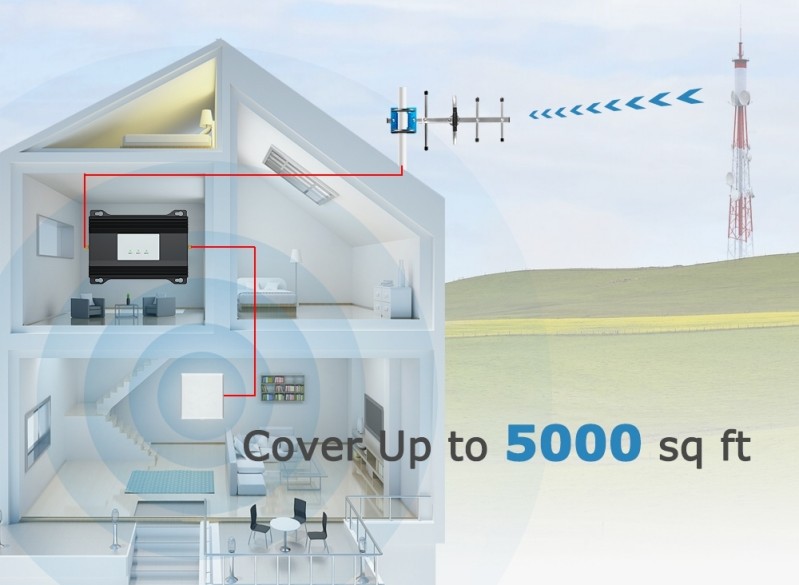
- English
- Español
- Português
- русский
- Français
- 日本語
- Deutsch
- tiếng Việt
- Italiano
- Nederlands
- ภาษาไทย
- Polski
- 한국어
- Svenska
- magyar
- Malay
- বাংলা ভাষার
- Dansk
- Suomi
- हिन्दी
- Pilipino
- Türkçe
- Gaeilge
- العربية
- Indonesia
- Norsk
- تمل
- český
- ελληνικά
- український
- Javanese
- فارسی
- தமிழ்
- తెలుగు
- नेपाली
- Burmese
- български
- ລາວ
- Latine
- Қазақша
- Euskal
- Azərbaycan
- Slovenský jazyk
- Македонски
- Lietuvos
- Eesti Keel
- Română
- Slovenski
- मराठी
- Srpski језик
How to Properly Install a Mobile Phone Signal Booster Amplifier
2024-11-13
With the rapid advancement of technology today, an increasing number of electronic devices require stable network connections, such as mobile phones and Internet of Things (IoT) devices in our homes. These devices rely heavily on high-speed and reliable mobile signals. Consequently, our locations need to have adequate coverage from mobile network operators. However, if your home is situated in an area with poor mobile signal reception—due to obstructions from buildings or natural features—the signal strength may be insufficient, leading to unstable connectivity for mobile phones and other electronic devices. In such cases, you may need to invest in a signal enhancement system to improve the mobile signal quality in your home.
1.Select a Signal Booster
When purchasing a signal amplifier, it is essential to first determine the signal frequency used by your local operator. This knowledge will enable you to select the appropriate amplifier model.
The second consideration is the selection of indoor and outdoor antennas. There are typically many types of antennas available for both indoor and outdoor use. You can choose the appropriate antenna with the assistance of dealers.
These two items are essential, and the next step is installation.
2.Installation Location Requirements
● The equipment should be installed in an environment that is free from high temperatures, direct sunlight, humidity, and rain.
● The installation location should take into account the outdoor antenna cable wiring, ensuring that the equipment is securely installed and that future inspections and maintenance are easily accessible.
● The location where the equipment is installed must have a power supply.
3.Installation of Outdoor Antennas
The primary function of the Signal amplifier is to enhance weak RF signals in a specific area. The strength of the outdoor antenna's signal directly impacts the effectiveness of indoor coverage. To achieve optimal coverage, selecting the appropriate location for the outdoor antenna is crucial.
Use a mobile phone to identify the location with the strongest outdoor signal, and install a fixed outdoor antenna at that site. The area with the strongest signal is typically found in a relatively open environment, free from obstacles, such as balconies, rooftops, and open roofs.
The outdoor antenna should be positioned in the opposite direction of the indoor antenna, ensuring a sufficient distance between the two. The minimum separation between the outdoor and indoor antennas must exceed 10 meters. If this distance is not maintained, the amplified signal may reflect back from the indoor antenna to the outdoor antenna. This feedback can lead to self-excitation of the device, resulting in a reduced coverage area and poor call quality. The mobile network may be significantly impacted. In cases of severe self-excitation, the device may ultimately cease to function.
If the call quality is poor due to a weak signal, please adjust the direction of the outdoor antenna or change its position to achieve optimal call performance. When using the amplifier, ensure that the frequency band utilized by the mobile phone matches that of the amplifier.

4.Indoor Antenna Installation
● The appropriate antenna should be selected based on the site conditions and requirements. The amplifier can utilize multiple antennas to distribute the signal evenly over a larger area.
● Indoor ceiling antennas are ideal for installation in the center of open spaces.
● When the coverage area is long and narrow—such as in corridors, long rows of houses on both sides, tunnels, elevators, or rural open spaces—it is advisable to use directional panel antennas.
● Whip right-angle antennas are ideal for installation in small rooms or apartments.

5.Antenna Cable Layout
● Position the cable to allow for natural and smooth bending, ensuring that the outer layer is protected from any damage.
● When securing the cable to the cable rack, it should be neatly bundled. When guiding the cable into or out of the trough, use a hole opener to create an opening in the cable trough, and then install a PVC locking nut to protect the trough.
● Ensure that the horizontal cable remains straight and secure it with a fixing clamp every 1 to 1.5 meters.
● Secure the vertical cable every two meters to prevent damage to the cable or amplifier from its weight. Avoid applying excessive tension to the cable, as this can lead to damage.
● Separate the RF cable from the power cable. If the cable rack must be placed on the same rack due to site conditions, appropriate isolation measures should be implemented.
● Properly tighten all connection components of the entire system, from the antenna to the active interface and the passive-interface, ensuring that the electrical connections are secure. Additionally, waterproof the outdoor connectors.
● Implement lightning protection measures for the antenna and feeder system by design specifications. Ensure that the antenna feeder does not deform at the location of the grounding clamp, and make sure to waterproof the feeder.
● Keep the exposed cables indoors organized. If the length of the exposed cables exceeds 1 meter, install a PVC trough and place small passive RF components, such as power dividers, inside the trough.
● Ensure the cable ends are waterproof and moisture-proof. Use waterproof tape to seal the exposed cable ends.
6. Cell Amplifier Installation
● Choose an appropriate installation wall, such as a cement or brick wall.
● Manually simulate the installation of the device on the wall and mark the location of the installation hole.
● Use an appropriate drill bit to create a pilot hole at the marked location.
● Install the self-tapping screws from the package into the drilled holes and secure them.
After completing the installation, you can power on your signal amplifier. If everything has been installed correctly, you should notice significant improvements. The signal strength will increase, resulting in better call quality and video streaming, and your home IoT devices should function effectively.
The above outlines the precautions for correctly installing a set of signal amplifier equipment. Have you understood it?
If you require a signal amplifier device, we invite you to explore our products. We are Fuzhixing Electronics, specializing in the research, development, and production of electronic equipment. Our signal amplifier products are among our primary offerings, backed by 18 years of production experience. The following models are currently in high demand. Please contact our sales team for assistance in selecting the right model and frequency for your needs.




